Even though your marketing priority may be getting as many leads as possible, every lead doesn’t have the same needs. Some leads may barely be starting to look into potential solutions. Other leads may be ready for a sales call. And other leads will never convert. So, how can you find out which leads need what? That’s what lead scoring is all about.
In this article, we’ll go through everything you need to know about lead scoring. We’ll show you lead scoring models and best practices to help your marketing and sales teams reach the right leads at the right time.
🔥 Hot tip: If you want faster ROI, use sales intelligence tools like UpLead to find in-market leads looking for a solution like yours today. Grab 5 free leads today.
What Is Lead Scoring?
Lead scoring is a methodology used by sales and marketing teams to rank your leads that’s based on their conversion potential.
Start with your leads. You can find them organically, purchase them, or utilize sales prospecting. Once you have your leads, you can determine their conversion potential with information about their behavior, their data (location, job title, company size, etc..), their place in their buyer’s journey, and their need for your solution. Then you can assign point values to qualify each attribute and accurately score them. The better they perform in each area, the more points they get.
After each lead is properly scored, you can choose among lead scoring systems like BANT to qualify them and make sure you’re approaching the person with purchasing authority.
The right lead scoring models can streamline your sales funnel. It lets your marketing and sales teams know which leads you can send directly to your sales team, and place the ones not ready in nurturing campaigns.
There’s no such thing as a universal lead scoring system for every company. A good lead scoring model is built with your ideal customer in mind. It should accurately score as many leads as possible in as little time as possible.
The improvement of your conversion rate determines the efficiency of the lead scoring system.
Lead generation doesn’t have to be all that painful. With UpLead, you can easily connect with high-quality prospects and leads to grow your company.
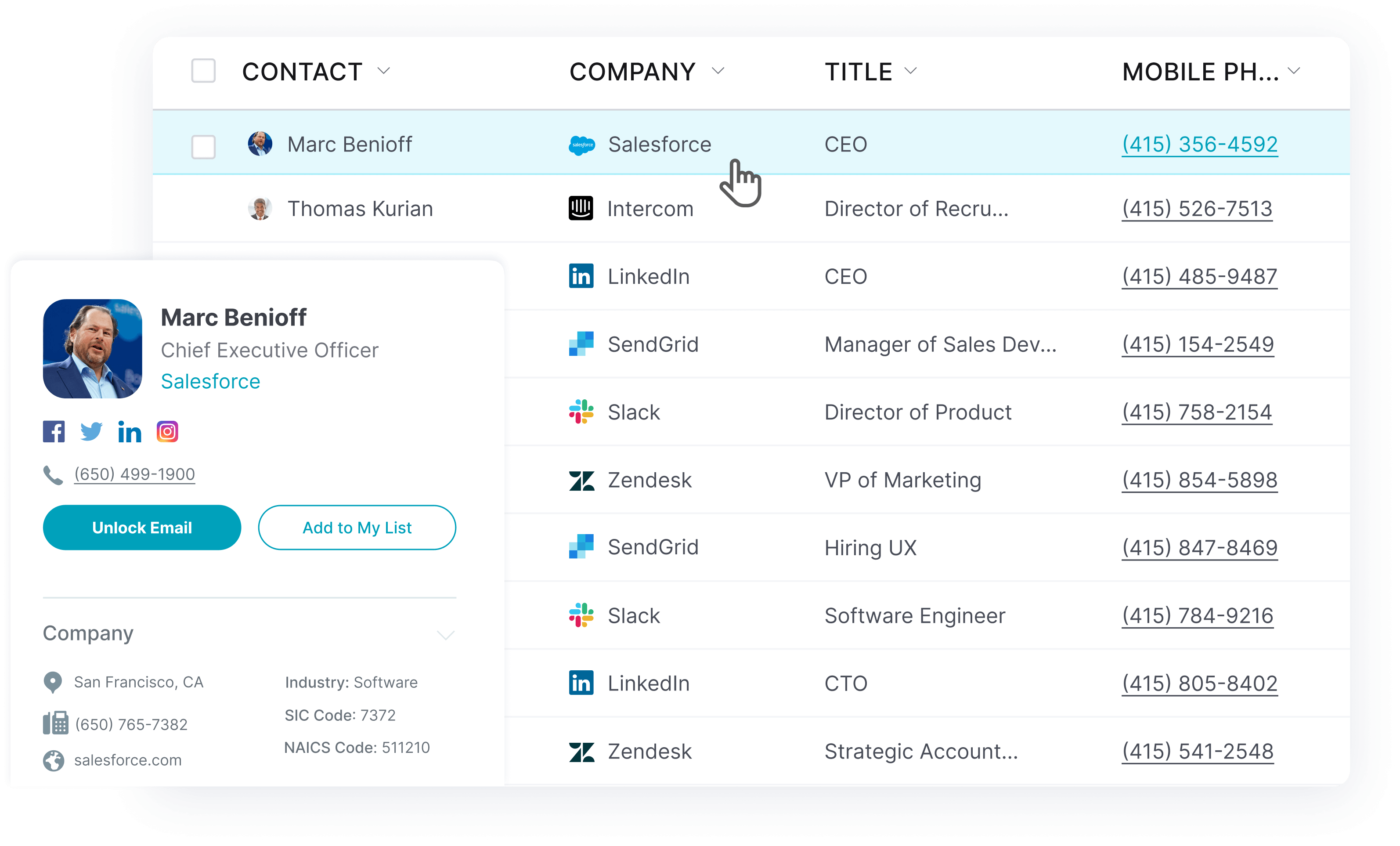
How to Build Your Own Lead Scoring Model
Since building lead scoring models is different for every company, you can build lead scoring systems that adapt to your needs.
Here’s the step-by-step process and best practices for building your own lead scoring models:
Define the Components
Start building your lead scoring model by defining who your ideal lead is. Take these attributes into account:
Personal attributes
Especially in B2C companies, you need to start by gathering personal attributes. Gathering the right attributes is vital for marketing and sales goals. If you have a B2B business, you also need to check the person’s buying authority’s personal attributes.
You can usually get this data via forms your leads filled out on your website, their professional profiles on platforms like LinkedIn, or direct conversations.
Here are some of the personal attributes you should take into account:
- Age
- Gender
- Job title
- Department
- Location
- Income
- Company
For example, consider designing your ideal lead for a PC game. Your research shows that the ideal targets are males who are 18 to 45 years old, have a job title, and make less than $90,000 a year.
Their job title and gender matter more than their sexual orientation or age, which should affect the final lead score.
Company attributes
If your company is selling B2B solutions, your ideal client should be the business that best fits these demographics:
- Company size
- Company age
- Estimated yearly revenue
- Industry
- Company value
An office space company may determine that sales and marketing efforts should be focused on companies that are less than two years old, have a maximum of ten employees, and are focused on virtual solutions. The lead scoring models should also account for their budget for office space based on their company’s revenue.
Behavior and Engagement
A lead’s behavior can tell a lot about their buying readiness. Here are some of the attributes that should affect your lead scoring models:
- Email Engagement
- Social engagement
- Visited pages
- Pattern while navigating websites
- Filed forms and requests
- Inside sales history
You can determine the most important user behavior by examining the leads that have already become buyers. This data can tell you which forms are the most valuable (such as a demo request form) and which pages they visit before buying (such as the pricing page).
You should also look at their level of engagement. If a lead filled out all the most important forms but hasn’t visited your website in a few months, they may not be a qualified lead anymore.
Your lead’s behavior and engagement can help you improve your sales strategy and score them accordingly.
Prioritize the Components
Once you’ve collected all the data, how will you know which matters most to your sales and marketing efforts? How can you prove causation, not just correlation?
The first step should be establishing good communication with your sales team. Your sales team knows a lot about the leads that will convert and those that won’t. They’ll be able to tell you if their job title matters and which sales and marketing efforts have worked the best so far.
When talking to the team, ask questions like: What needs does the typical customer have? What about their characteristics? Which parts of the sales and marketing materials are they more interested in?
Next, talk to your customers. Find out more about their needs and demographics. Why did they end up buying? Which sales and marketing efforts did they engage with and why? You can pinpoint this information through interviews or online forms.
Finally, check the data. Use your analytics to identify the hard data associated with your converted leads. Which content did they download? Which pages did they view? Which campaigns were they engaged in?
You should also check the information about the leads that didn’t convert. This tactic will help you identify issues with your sales strategy and lead scoring models and the behaviors you should consider when scoring your leads.
Once you’ve spoken with your clients and sales reps and checked your analytics, it will be easy to identify the data that matters most.
Calculate Lead Score
Now that you know which data is most important, you need to calculate your lead’s score accordingly. Here are the three main ways to calculate this score…
1. Manual lead scoring
This lead scoring model can be very time-consuming. So it’s usually better when you have a few leads that need personal attention (such as someone who needs help selling high-priced items).
Start by calculating your lead-to-customer conversion rate. This rate is the percentage of leads that end up converting. If you acquire 100 leads and convert 20, your lead-to-customer conversion rate is 20%. This number will act as a starter metric to gauge future successes.
Once you’ve calculated your conversion rate, define the attributes of your ideal leads via the information we provided above. Then assign point values to them: the more important the attribute, the higher the value.
Finally, go through your leads and rate them according to your chosen attributes.
2. Logistic regression lead scoring
This lead scoring model is achieved through data mining techniques. You can program or build a formula in a spreadsheet that mathematically calculates the chances of converting a lead, based on the data you input.
This type of lead scoring is great when you can acquire all of your leads’ data. Once you’ve built the formula, your spreadsheet can instantly give you the score based on the data. This formula will simplify the whole sales cycle.
3. Predictive lead scoring
This lead scoring model has a hands-off approach. It leaves the decision-making to automated processes that analyze potential leads, their attributes, and their behavior. Then it rates them automatically. You can manually improve this lead scoring system to make it even more accurate.
Although predictive lead scoring is more expensive, it is cheaper in the long run, particularly if you need to manage hundreds or thousands of leads.
Lead Scoring Examples
Looking for examples? Let us show you lead scoring in action…
1. Lead scoring based on technographic information
You can tell a lot about a company based on its technology. By paying attention to the systems, your prospects utilize, you can more easily figure out which solutions they need and score them accordingly.
You can look for these kinds of technographic:
- Content management system
- Customer relationship management (CRM)
- Email service provider
Say you’re selling a SaaS that integrates with certain CRMs. Your lead scoring systems could look something like this:
- +30 points for using CRM that integrates with your SaaS
- 0 points for not using a specific CRM
- -30 points for using CRM that doesn’t integrate with your SaaS
Since companies that already use a CRM probably won’t be interested in a solution that doesn’t integrate with it, you should reduce their score based on it. Let’s say you’re starting to score two leads: A and B. Here’s the way this lead scoring would look:
- Lead A uses CRM that integrates with your SaaS: +30 points
- Lead B uses a CRM with no integration with your SaaS: -30 points
Since that’s a difference of 60 points, make sure you add negative points in the places where it makes the most sense.
2. Lead scoring based on personal and professional data
You can divide user data into two categories: personal and professional. The data you’ll be awarding the highest score will depend on what you’re selling and to whom you’re selling it.
If you’re selling directly to a consumer, you may need to examine their personal data more closely. But this data may not be important if you’re selling to a business.
For example, a B2B company selling office supplies may score its leads in the following way:
- +50 points for employees in the purchasing department
- +50 points for upper management employees
- +15 points for salespeople, accountants, and HR
- -25 points for self-employed people
Since both the purchasing department and upper management have the same authority to make purchases, they’ll be awarded the same points. But self-employed people have less need for office supplies, so their score should be lower accordingly.
From the previous example, let’s find out how lead scoring systems like these would work with Lead A and Lead B. After checking their professional information, you figure out that Lead B is in charge of their company’s purchasing department, but Lead A is self-employed. Then after factoring this information in, here’s the way your leads’ scores would look:
- Lead A: 5 points
- Leab B: 20 points
As you can see, the more you know about your leads, the better you can score them.
3. Lead scoring your leads based on behavior
Behavior is the most common (and most valuable) variable for lead scoring. As we’ve already mentioned, behavior is a strong factor when determining purchase intent.
Since you can measure many behavioral factors, you may decide to award fewer points but measure more factors. For example, your behavior score can end up looking this way:
- +3 points per email opened
- +5 points per email interaction
- +20 points per webinar attended
- +15 points per form filled out
- +15 points per eBook downloaded
- +2 points per page visited
The more common the behavior, the fewer points it should get. Likewise, the more engaged the lead is with your website, the more products they should get.
Again using the previous example, let’s say Lead A has opened two emails in the last month, interacted with one, and visited four pages. While Lead B has just opened one email and interacted with two pages, they have also downloaded an eBook and attended a webinar. Here’s the way their engagement would look:
- Lead A: 24 points
- Lead B: 62 points
As you can see, Lead B’s interactions indicate they’re more engaged than Lead A, even though they haven’t interacted with your website as much. Therefore, Lead B is a more viable candidate.
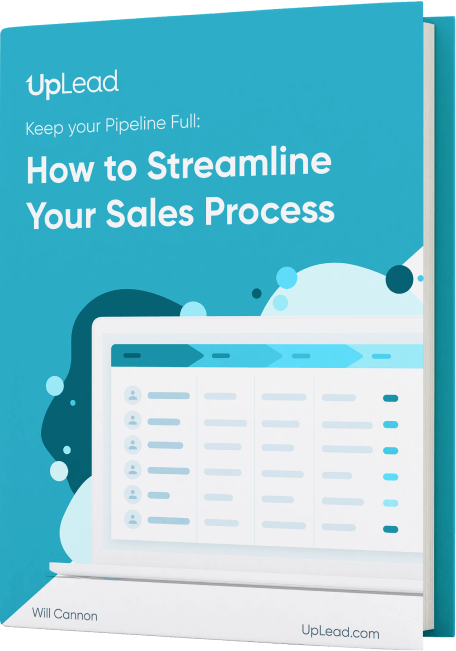
3 Lead Scoring Templates You Can Use to Get Started TODAY
Here are three lead scoring templates you use to start scoring leads today:
Lead Scoring Template by Demand Metric
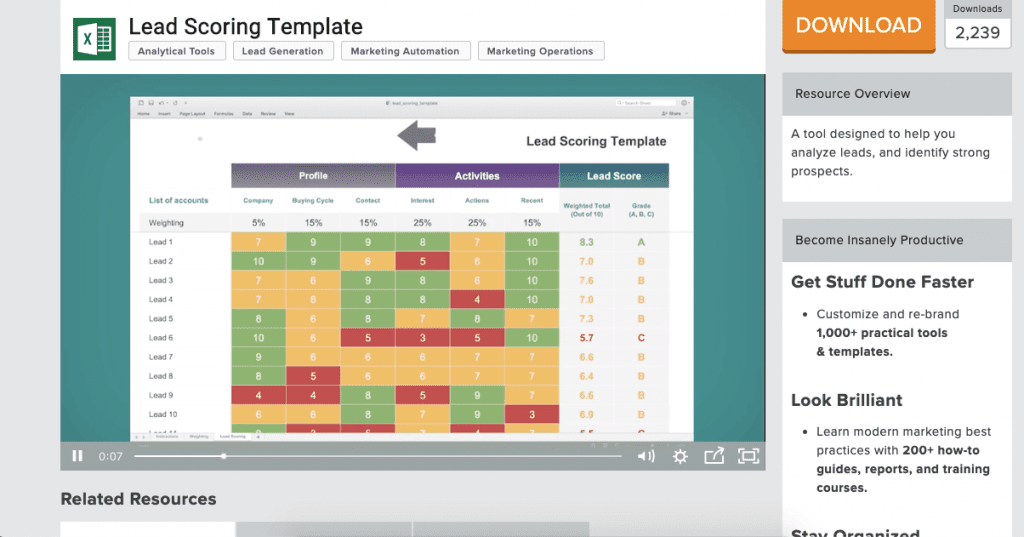
This Microsoft Excel template for lead scoring uses six types of criteria to give your leads a score up to 100. It further qualifies your leads as A, B, or C. Then you’ll know which leads to nurture and which ones to send directly to your sales team.
You can easily customize the criteria and the template and save a lot of time by creating your own lead scoring system.
Lead Scoring Spreadsheet Template for Learning by Huify
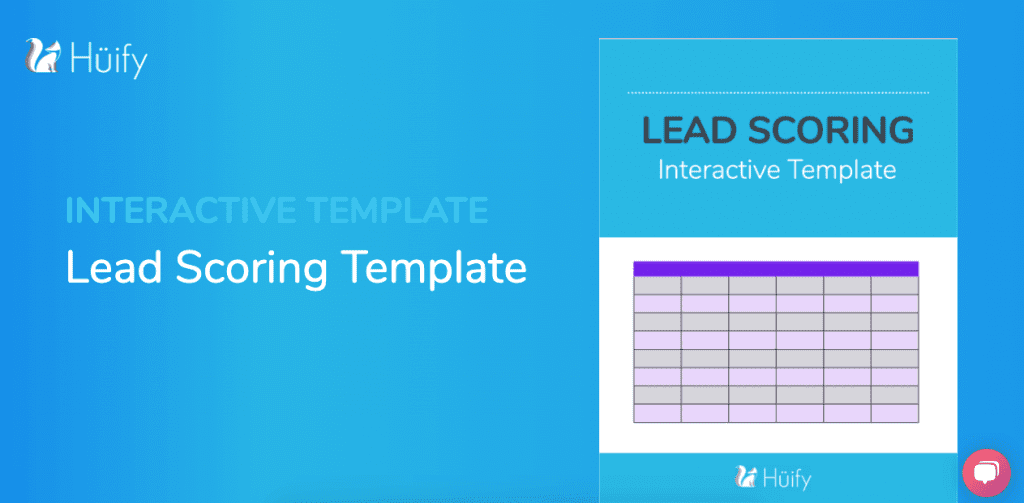
Huify offers you a free lead scoring template to help you learn how your lead’s behavior and actions affect conversion rates. You can also interact with this template and learn more about ways you can score and quantify the characteristics of your leads.
This template is a great learning tool that allows you to see how lead scoring works in real time and determine what goes into building a successful scoring system.
Machine Learning for Predictive Lead Scoring by joehoeller
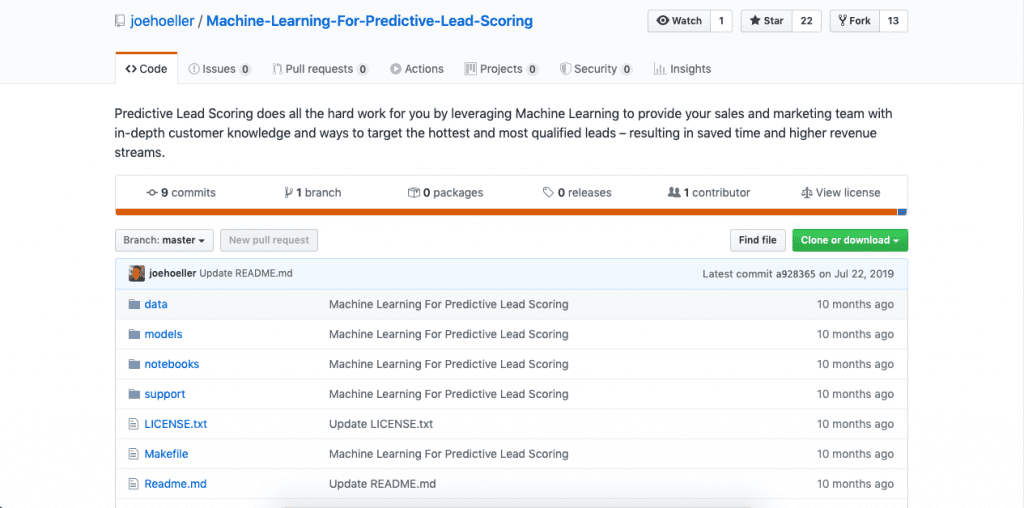
For more experienced programmers, this impressive lead scoring system uses machine learning to help you score your leads. This system can train an AI to learn how to automatically score your leads in the future by accessing a large amount of historical data.
Although this lead scoring system is more advanced, it can be a great tool for someone with a lot of information about their past leads and programming experience that will predict leads.
Lead Scoring Software
If you want to properly and effectively score leads, you’ll need the right tools. Here are the best lead scoring tools that are currently available…
Marketo for lead scoring

Marketo Engage focuses on B2B lead management. Its automated lead scoring tool is shaped by the marketer and based on the lead’s demographics, behaviors, and desired ranks. With these tools, you can use Marketo to build workflows and smart lists based on your leads.
Marketo also provides webinars and other resources to score leads so that you can use its lead scoring tool more effectively.
Hubspot for lead scoring
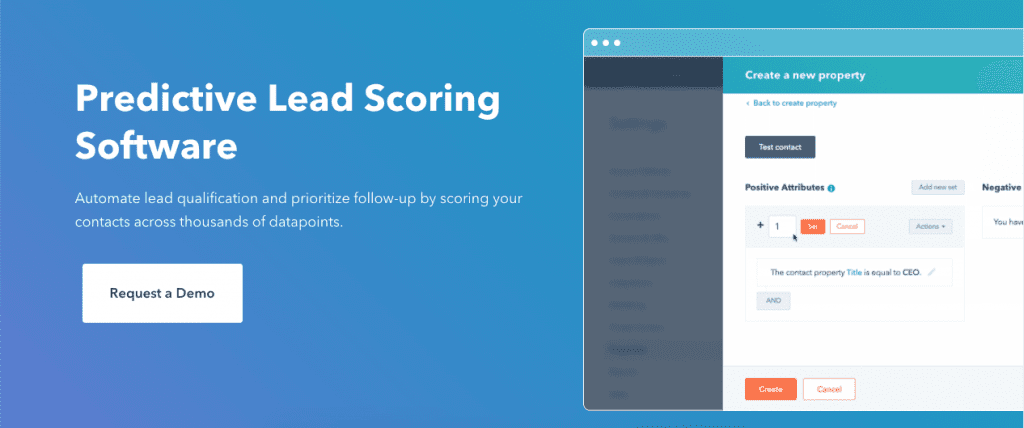
HubSpot’s Predictive Lead Scoring Software allows you to automate and streamline your lead qualification process. So you can spend less time scoring and more time selling.
With machine learning, HubSpot can identify your best leads. If you want more customized criteria, you can also choose traditional scoring. Since HubSpot allows you to scale up by offering up to 25 scoring sheets, you can score different audiences with different needs.
Salesforce for lead scoring
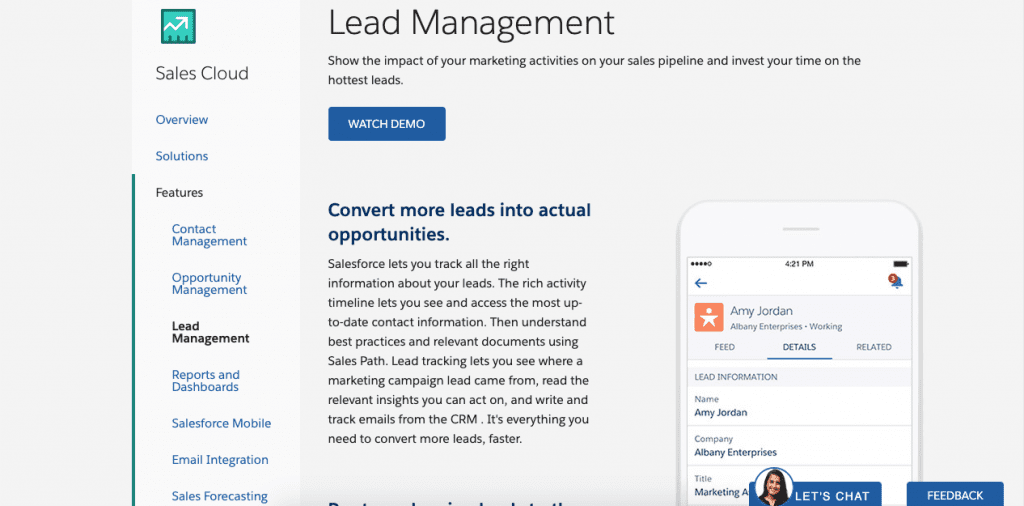
Salesforce is a leader in CRMs, and its lead scoring feature doesn’t disappoint. With Salesforce, you can track your leads to see where they come from and how they act. And to ensure all of your leads are properly developed and assigned to the right team, you can set up an automatic lead scoring system.
Pardot for lead scoring

When used with its lead grading feature, Pardot’s lead scoring can help you score leads and automatically send them to your sales and marketing team. This tool scores leads with a numerical value based on user behavior, location, industry, company size, and job title.
Zoho for lead scoring
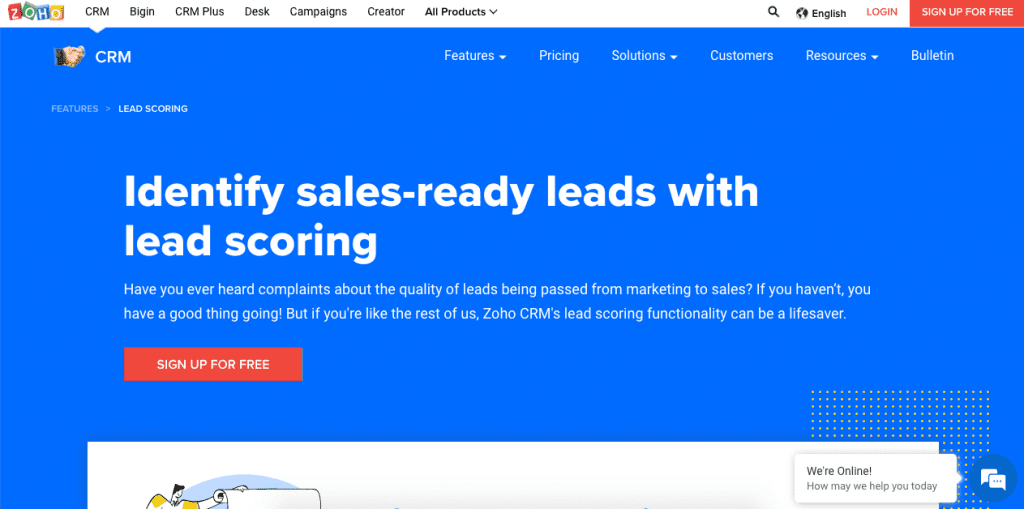
Zoho lets you score your leads based on demographics, behavior, survey responses, and email insights. Through positive and negative scoring, Zoho can help you eliminate cold leads and transfer the most qualified leads to your sales team.
Eloqua for lead scoring
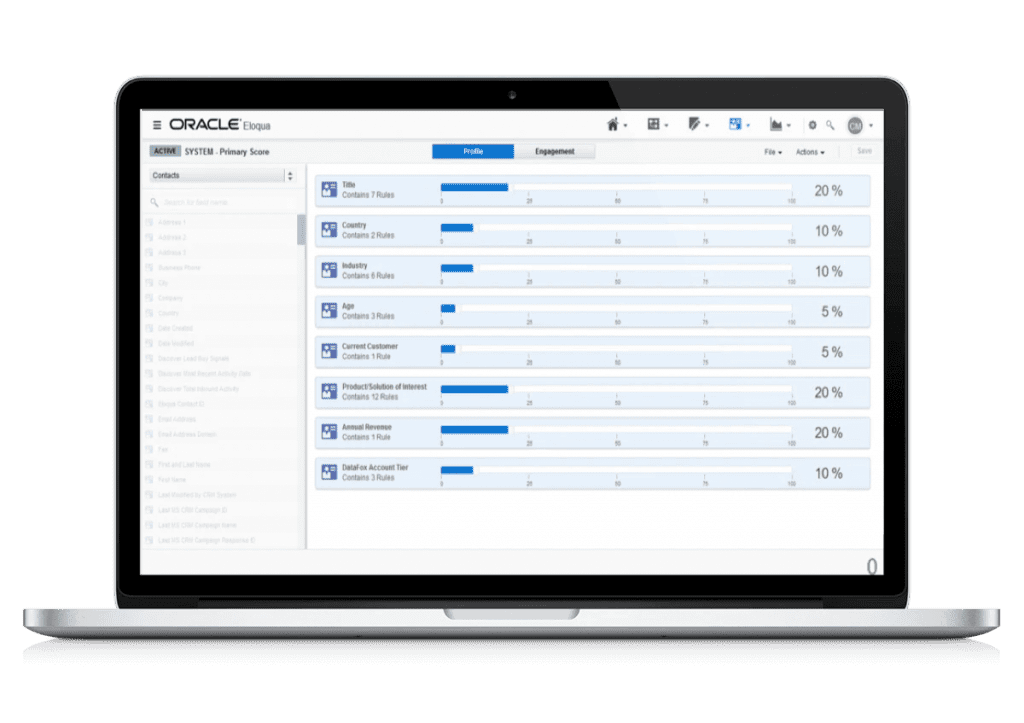
Oracle Eloqua’s lead scoring platform is focused on increasing speed-to-lead and lead quality. It uses multiple lead scoring modules and predictive analytics to score based on a buyer’s true intent. It combines lead profiles and behavioral data to build lead scores easily and accurately.
Infer for lead scoring
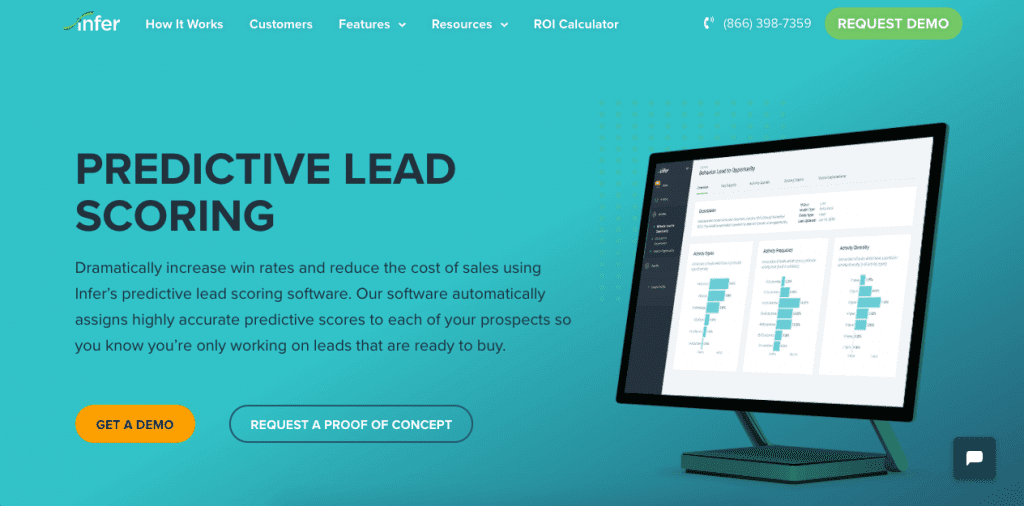
As we’ve mentioned before, Infer has powerful, predictive lead scoring software. It uses thousands of data points, including the ones in your CRM and in their extensive database. And it analyzes this data to score leads for you automatically. You can also use it to identify prospects and generate qualified leads for your business.
Pipedrive for lead scoring
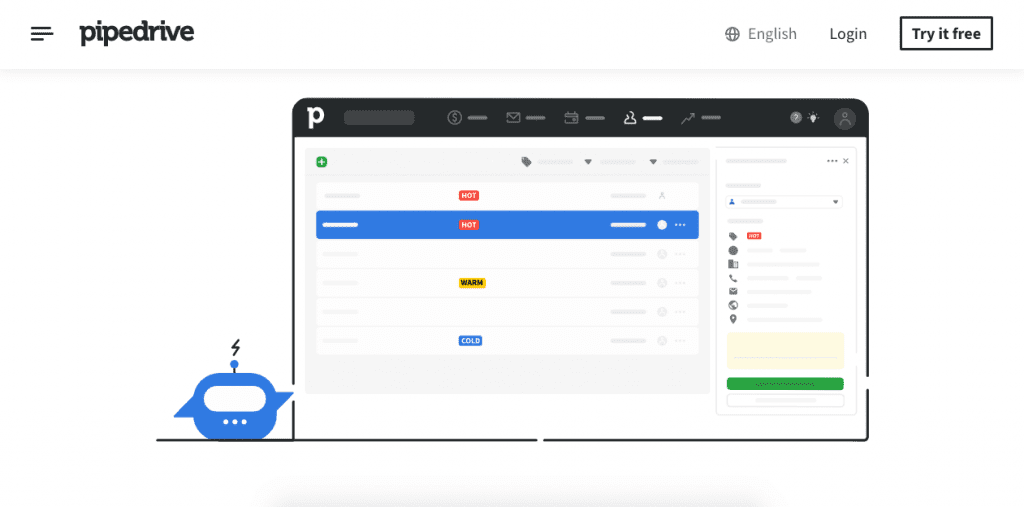
Pipedrive has great lead scoring features in its lead management platform. One of its most unique features is its LeadBooster chatbot.
This chatbot works 24/7 to score new leads, automate meeting schedules, and set up questions and responses. To optimize follow-up, you can even tailor questions to different web pages. Check this article on best chatbots if you want to learn more about these platforms.
Active Campaign for lead scoring
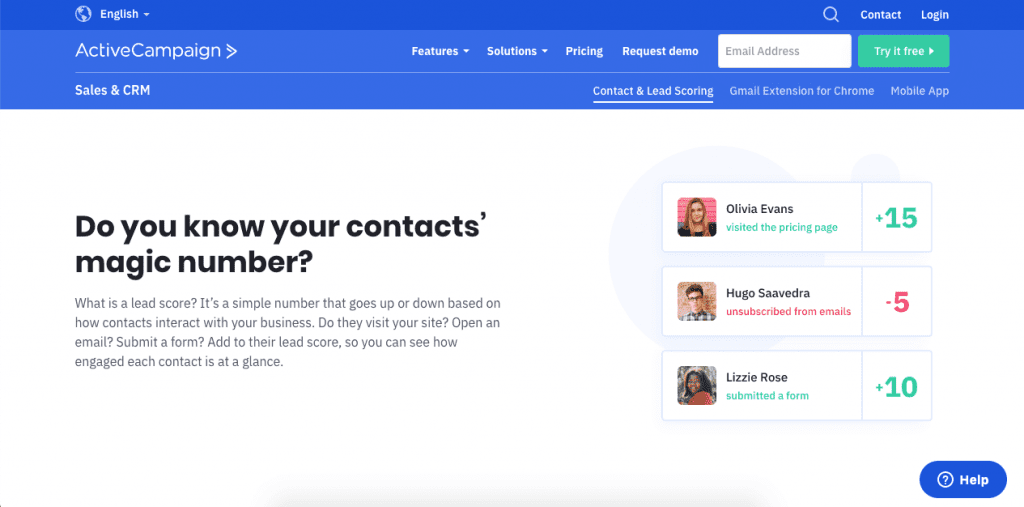
Active Campaign lets you score your leads based on their data and behavior. Once you’ve qualified a lead, you can automate your offer process to pitch your solution right away. And since you can also set up scores for multiple products, you can offer the right product to the right lead.
BONUS: UpLead for Data Enrichment to Improve Lead Scoring Data
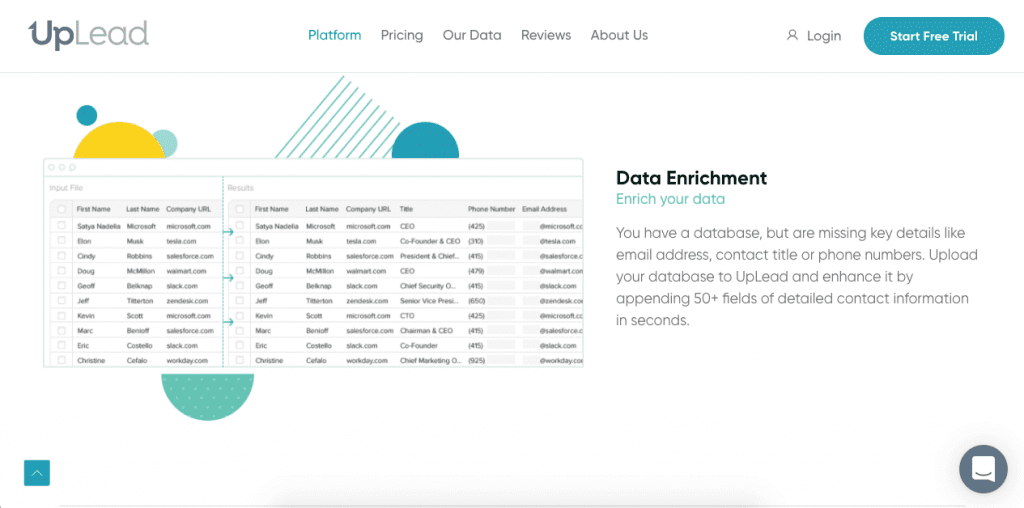
As you know, you need the largest amount of accurate data possible to get accurate lead scoring. How can you pursue leads when you don’t know everything you need to know? UpLead solves this issue through data enrichment.
Data enrichment gathers publicly available data from millions of leads to help you build a richer lead profile . And UpLead allows you to get leads or enrich the ones you already have. Then, you can manually score your leads or feed this information into machine learning software, which will score them for you.So now you can score all of your leads, regardless of the amount of information you have on them!
Lead generation doesn’t have to be all that painful. With UpLead, you can easily connect with high-quality prospects and leads to grow your company.

Reach the right leads at the right time
Lead scoring is a vital part of your lead management strategy. A good lead scoring system will allow you to pursue the right leads at the right time, and it can streamline your whole sales and marketing process.
If you haven’t already tried UpLead, why don’t you start enriching the leads you currently have with this platform? Start scoring your leads today!
Want faster ROI? Use sales intelligence tools like UpLead to find in-market leads looking for a solution like yours today. Grab 5 free leads today.








